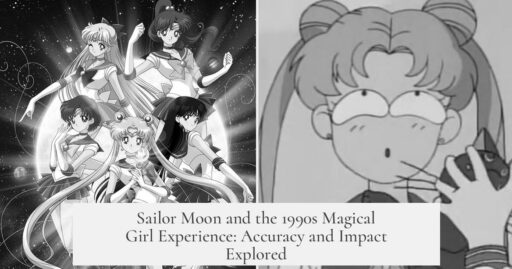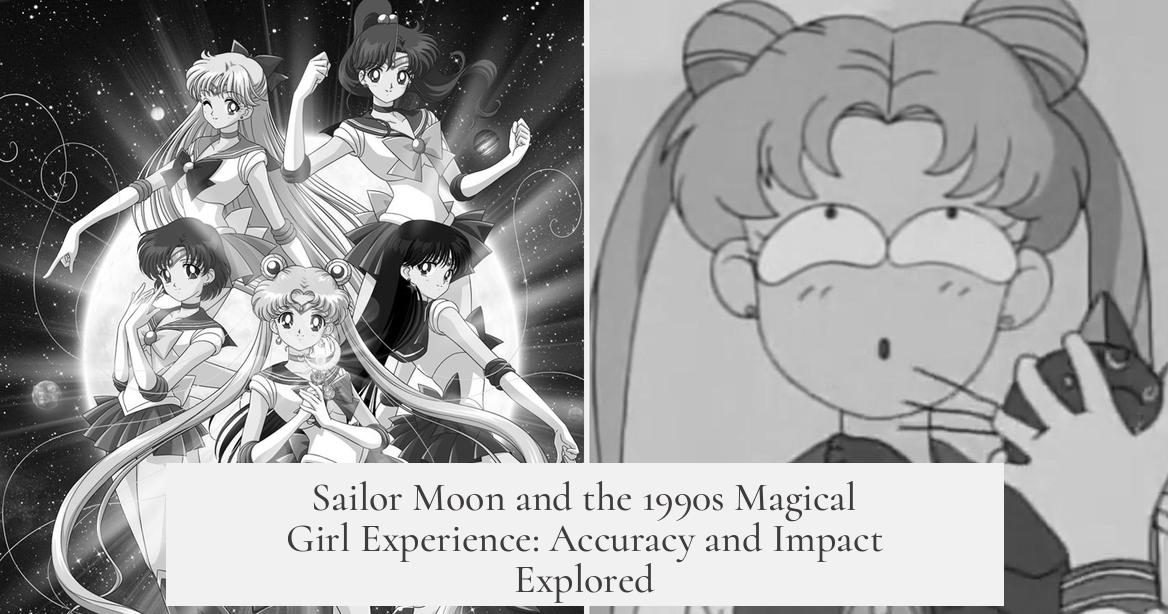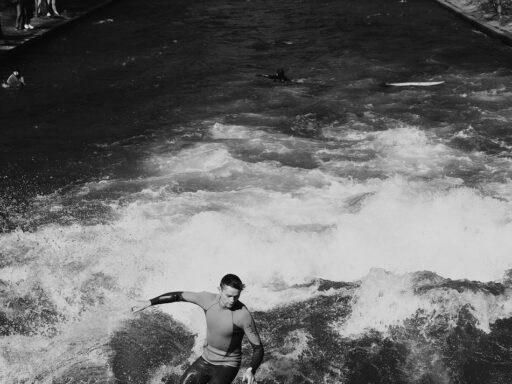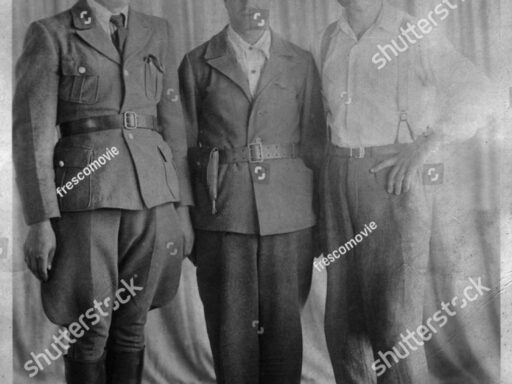Sailor Moon presents a stylized but influential depiction of what it meant to be a magical girl in the 1990s. It blends typical 90s cultural elements with dramatic and sometimes mature themes, but it does not capture the full, darker reality some later works explore about magical girls’ lives.
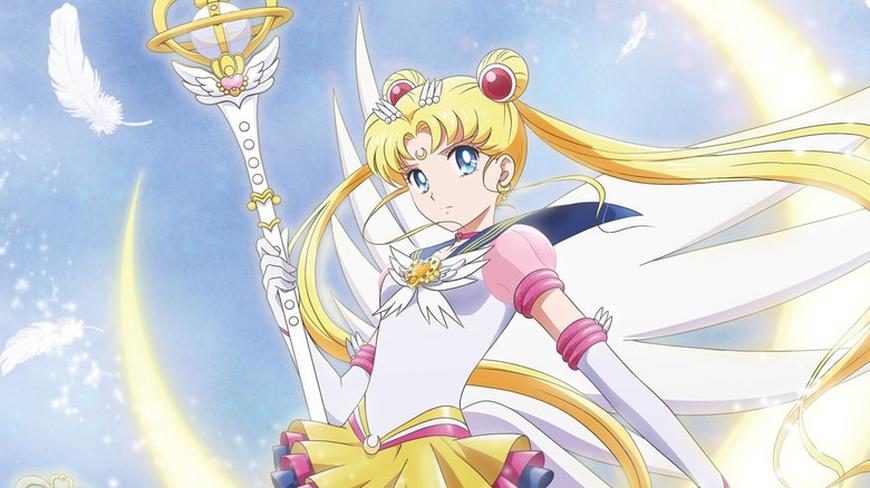
Sailor Moon emerged during the 1990s and clearly reflects this era. The show includes technology, fashion, and settings typical of that decade. For example, the character Ami uses a computer model from the late 1980s and carries a handheld device resembling a Gameboy or Nintendo DS. These elements anchor the story firmly in a 1990s world. This supports the idea that Sailor Moon depicts the magical girl experience of its time.
Beyond surface details, Sailor Moon’s narrative offers depth and complexity uncommon in children’s animation. The manga contains mature content such as suicide, war, death, and moral ambiguity. Battles are graphic, and civilians sometimes appear dead or zombified. Themes like homosexuality and even incest appear, showing that the story does not shy away from controversial topics. Some characters sacrifice themselves for the greater good, adding emotional weight. The villains have complex backstories that evoke sympathy. This shows the series explores the hardships of magical girl life realistically within its fantastical context.
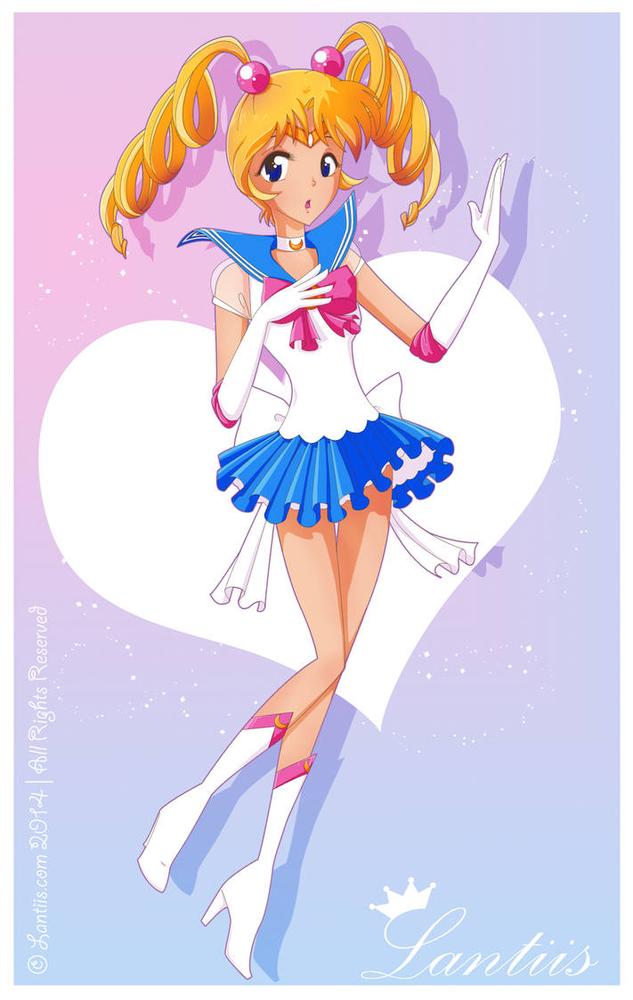
Despite this, Sailor Moon’s tone differs from darker magical girl stories that emerged later, such as Puella Magi Madoka Magica. In Madoka, magical girls face brutal fights over territory, mental disorders, and more existential horror. Sailor Moon’s universe, while perilous, often centers on hope and perseverance powered by the Silver Crystal—a key object giving the characters a fighting chance. It shows dangerous but survivable challenges rather than Madoka’s relentless despair and fatalism.
| Aspect | Sailor Moon (1990s) | Puella Magi Madoka Magica |
|---|---|---|
| Setting | 1990s, urban Japan with common technology and fashion | Dark, dystopian world with abstract magical spaces |
| Tone | Hopeful with dark elements | Bleak, tragic, psychological horror |
| Themes | Friendship, sacrifice, love, struggle | Death, mental health, existential dread |
| Character Fate | Survival often ensured through magical artifacts | High mortality, psychological breakdowns |
American versions of Sailor Moon were heavily censored. Much of the mature content was removed, including depictions of death and LGBTQ+ relationships. This greyed out the original’s intensity and social depth. Season 5 was never aired in the US due to these sensitive topics. Sailor Moon Crystal, a later adaptation, restores these elements and reflects the intended narrative more faithfully.
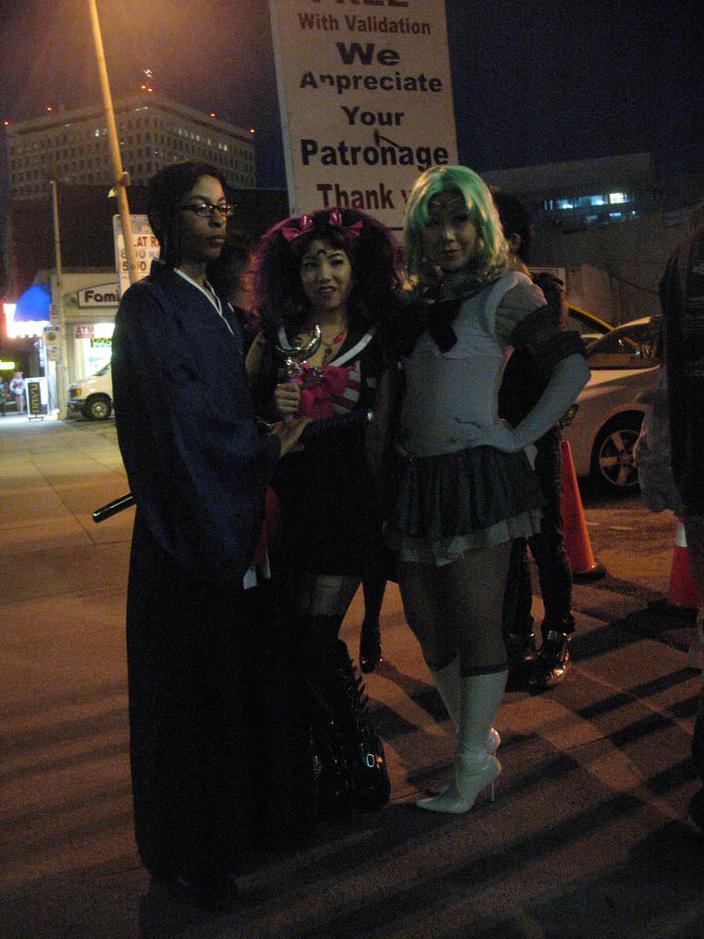
Sailor Moon also popularized key elements of magical girl and sentai genres, such as team battles, uniform costumes, and episodic confrontations with evil forces. Before it, magical girl stories often focused on witches living ordinary lives. This formula shaped the future of magical girl media globally, greatly influencing the 1990s anime boom beyond Japan, reaching places like Poland and the US. For instance, American fans even proposed a Saban-produced adaptation similar to Power Rangers.
While Sailor Moon captures much of the 1990s magical girl spirit, it is important to remember it remains a fictionalized version that blends fantasy and reality. It invites viewers to imagine a magical girl’s life through the filter of hope, friendship, and conflict but is not a documentary on the mental and physical dangers later revealed by darker stories in the genre.
Key points:
- Sailor Moon accurately reflects 1990s urban culture and technology.
- The series tackles mature and dark themes, uncommon in children’s shows.
- It presents magical girl life as dangerous but survivable through magical artifacts.
- Later darker portrayals like Madoka Magica show a harsher reality.
- Heavy US censorship obscured Sailor Moon’s original depth.
- The show heavily influenced magical girl genre conventions worldwide.
- Sailor Moon is best seen as a stylized, hopeful 1990s magical girl story, not a full picture of reality.
Is “Sailor Moon” an Accurate Representation of What It Was Like to Be a Magical Girl in the 1990’s?
Short answer: Yes and no. Sailor Moon perfectly captures certain magical girl vibes of the 1990s but misses some darker realities of the genre. It’s like a window into 90s girl power with sparkle, yet not the entire mystical, perilous universe.
Let’s unpack why Sailor Moon stands as a unique, sometimes contradictory, portrayal.
The 1990s Magical Girl Scene: A Snapshot Through Sailor Moon’s Lens
If you glance at the technology and fashion in Sailor Moon, it screams 1990s. Ami’s handheld computer (think Gameboy or DS) and urban Tokyo life ground the show firmly in that decade. Clothes, cars, and even casual teenage life faithfully mirror 90s Japan—nothing retro about this setting. So, if you imagined magical girls with *street-smart* attitudes, pastel skirts, and tech gadgets, Sailor Moon nails that era.
But it’s not all glitter and moon beams. The manga digs into brutally dark themes—suicide, war, death, and sacrifice feature prominently. For example, in the fifth arc, expect heavy losses and big emotional stakes. One scout even sacrifices herself for the universe’s survival. Villains get layers, making you sympathize just before they implode. Civilians face zombie-like fates. Frankly, it’s not kids’ bedtime storytelling.
Contrary to popular belief, Sailor Moon was never just about glittery battles and cute catchphrases. The depth rivals today’s darker magical girl tales—just wrapped in a 90s package.
What Sailor Moon Gets Wrong (or Doesn’t Tell You)
Now, hold on! If you compare Sailor Moon to Puella Magi Madoka Magica (a 2010s hit), things shift dramatically. Madoka paints magical girl life as a psychological nightmare—deadly battles for territory, crippling depression, and no silver crystal to save you. It’s grim, gritty, and arguably more realistic in a metaphorical sense.
Sailor Moon feels almost nostalgic or period-piece-like to Madoka’s horror. Some argue the mid-90s were about grungy, edgy dark themes—not the clean Sailor uniforms and sparkly transformation sequences. Oddly, some fan theories peg Sailor Moon’s core themes closer to the 1950s or 60s archetypes, though the tech and style shout 90s.
Moreover, many darker elements got heavily censored in U.S. airings. The infamous absence of Season 5 in American runs is a perfect example: themes like death and gender fluidity were cut (or never aired). The true Sailor Moon story—the one with complex LGBTQ+ representation and mature themes—arrived fully only with Sailor Moon Crystal. So if you remember it as a lighthearted magical girl cartoon, that’s… half the tale.
Sailor Moon Versus Reality of Being a Magical Girl in the 90s
So, was being a magical girl really like Sailor Moon’s world? Assuming magical girl life means juggling school, boy troubles, friendship drama, battling evil every week, and occasionally facing universe-threatening consequences—the answer is yes. It’s a fun metaphor for the growing pains and self-discovery girls faced in the 90s. The show captures the excitement and terror of young girls “discovering they are part of something bigger.”
But don’t forget: actual magical girl stories of that time, like many early mahou-shoujo shows, often focused on ordinary girls dealing with magic as a side-effect, not frontline warriors. Sailor Moon introduced new sentai elements—think team dynamics, uniforms, and weekly villain battles—that influenced the genre’s direction dramatically.
Why Sailor Moon Deserves Credit for Popularizing 90s Magical Girl Culture
No doubt, Sailor Moon is iconic. Its global popularity led to adaptations and inspired other shows worldwide—including a short-lived U.S. dub called “Saban Moon” (yes, like Power Rangers). It kicked off the anime-manga boom in places like Poland and beyond. Along with Dragon Ball, Sailor Moon helped anime escape niche markets and capture mainstream audiences in the West by the late 90s.
Whether you’re a fan of the earlier, lighter episodes or the intense fifth arc, the show shaped what “magical girl” meant—moving it from lone witches to a united team fighting mysterious evils week after week. This change influenced countless successors.
So, What Is the Verdict?
Is Sailor Moon an accurate portrayal of 90s magical girl life? Yes, if you mean the vibrant, teamwork-driven, and sometimes dark but mostly hope-filled teenage magical warrior experience as imagined by 90s pop culture. No, if you expect a realistic depiction of a magical girl battling mental collapse, faction wars, or surviving constant horror, à la Madoka.
Remember: Sailor Moon makes you think one way, then flips the script. It’s a time capsule, an allegory, and a fantasy-battle saga wrapped into one. For a 1990s kid watching weekly, it was an inspiring, empowering story. But the full, uncut manga and later adaptations reveal how complex and layered that story really is.
Curious? Here’s What To Do Next
- Watch Sailor Moon Crystal to get the full original story untouched by Western censorship.
- Compare it with Puella Magi Madoka Magica to see two very different takes on magical girl life and see how genre expectations evolved.
- Reflect on your childhood memories—did you feel like a magical girl? Did you resonate with Sailor Moon’s themes of friendship and battle?
- Explore earlier mahou-shoujo shows to understand how Sailor Moon changed the genre’s focus from solitary witchcraft to team heroism.
In the end, Sailor Moon is more than just nostalgia. It’s a cultural touchstone for magic, tragedy, friendship, and growth all set within the shiny neon-lit 1990s Tokyo. And that’s a pretty magical snapshot in its own right.
Q1: Does Sailor Moon show the real dangers Magical Girls faced in the 1990s?
No. Sailor Moon shows battles and threats, but not the harsh mental struggles or deadly fights for territory seen in other series like Madoka.
Q2: Is Sailor Moon’s setting truly from the 1990s?
Yes. The technology and fashion in Sailor Moon, like handheld computers and cars, reflect the 1990s, not earlier decades.
Q3: Does Sailor Moon contain dark themes like death and sacrifice?
Yes, especially in the manga. It includes war, suicide, death, and even themes like incest and homosexuality, which were rare for children’s shows then.
Q4: How did American censorship affect Sailor Moon’s story?
The U.S. versions cut many dark elements and entire seasons, hiding mature themes and deeper storylines that were present in the original.
Q5: How does Sailor Moon compare to other Magical Girl stories like Madoka?
Sailor Moon focuses on teamwork and hope, with a powerful object saving the girls. Madoka’s world is darker, with more fatal consequences and no easy solutions.
Q6: Did Sailor Moon influence the Magical Girl genre in the 1990s?
Yes, it popularized team battles and uniforms, shaping the genre and sparking anime booms worldwide, especially in places like Poland.
